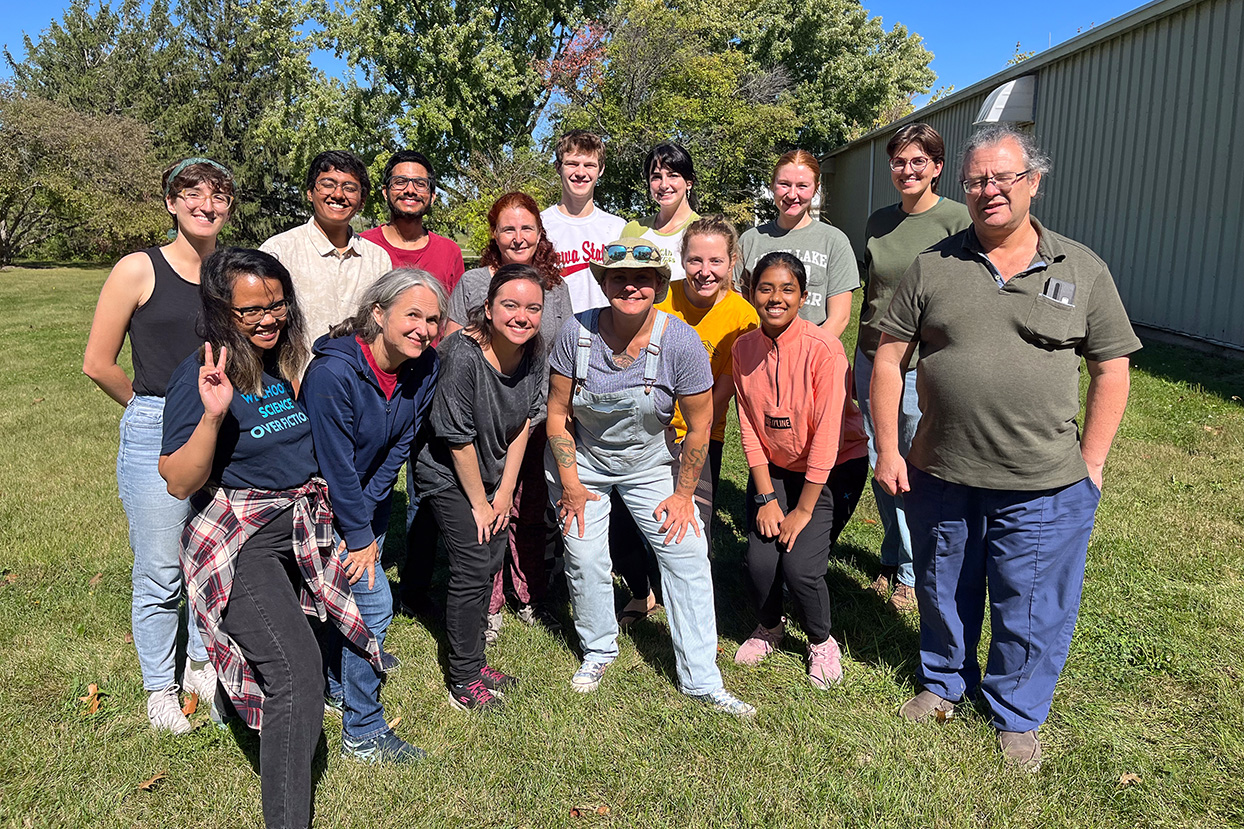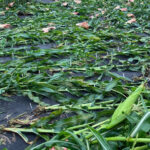
How does one measure the impact of 2 tons of fruits and vegetables? Through the hands-on experience Iowa State University students gain during the planting, growing and harvesting process? Or by the number of smiles on students’ faces, knowing they can use some fresh fruits and vegetables to prepare their meals.

For the past two years, Good Earth Student Farm has been donating various fruits and vegetables grown by its student members to SHOP (Students Helping Our Peers), Iowa State’s on-campus food pantry. The donated produce has amounted to 4,000 pounds, or 2 tons.
The produce is grown beneath two high tunnels – one covered, one not – at the ISU Horticulture Research Station north of Ames. Everything from broccoli to lettuce to peppers is grown, including foods that would appeal to international students on campus – okra, sweet potatoes and Swiss chard.
Much of the produce starts from seeds germinated in the Department of Agronomy greenhouses before being transplanted to the soil beneath the high tunnels. The seeds are either donated or purchased using funds the Good Earth Student Farm receives from the university or the ISU Foundation.
“It was surprising to come back after spring break last semester and see the amazing transformation of how much the plants had grown,” said Laura Hinojosa, junior in animal ecology.
Prior to the COVID-19 pandemic, Good Earth Student Farm was operated as a Community Supported Agriculture operation. Through this, Iowa State faculty, staff and students could purchase shares to receive a supply of fresh, seasonal fruits and vegetables throughout the growing season. These shares were separate from the horticulture station’s regular produce operation.
Now, the organization operates as a workshare under the guidance of advisors Ajay Nair, professor of horticulture, and Mary Wiedenhoeft, interim department chair and Morrill Professor of agronomy. Good Earth Student Farm members receive produce in exchange for their time volunteering to grow and harvest the fruits and vegetables. The rest of the produce is donated to SHOP.

Sarah Schroeder, SHOP co-president and senior in food science and global resource systems, said the produce received from Good Earth Student Farm is always quickly taken by SHOP patrons.
“This partnership offers the SHOP and its patrons access through the summer and fall months to a diverse array of produce items, including mustard greens, Swiss chard, peppers, tomatillos and okra, which are often harder to find in the grocery stores in Ames,” Schroeder said.
In addition to receiving produce in exchange for their time, the student members also get to apply the skills learned in their classes on the farm.
“Seeing first-hand the things I’m learning about in class has been cool,” said Sara Marston, freshman in agronomy. “My favorite part about this experience was our potluck, where we got to enjoy the things we grew.”
Next year, Good Earth Student Farm will expand its operation to the new Alliant Energy Solar Farm at Iowa State University. Working alongside faculty researchers, the student organization will help determine which vegetables grow best under or near solar panels.
No matter where the produce is grown – at the Horticulture Research Station or under the solar panels – Schroeder hopes the donations keep coming in.
“We hope to continue to maintain and expand this partnership,” Schroeder said. “We have great respect for the work being done through the Good Earth Student Farm and the model under which they operate.”
In photo at top: Good Earth Student Farm volunteers pose for a photo at the ISU Horticulture Research Station north of Ames. The group grows and harvests crops from beneath two high tunnels at the station.
Article by Whitney Baxter, CALS





